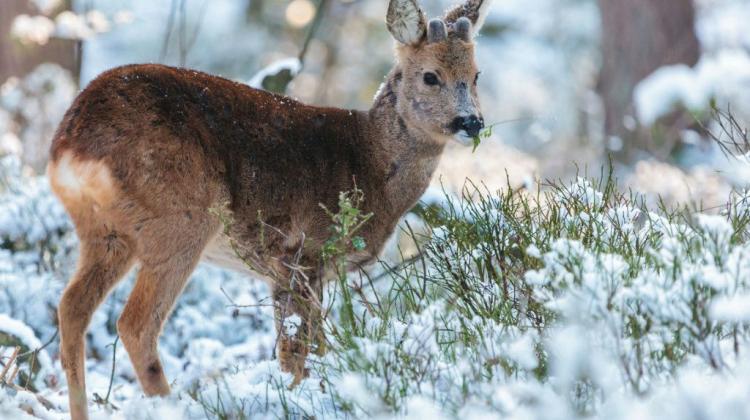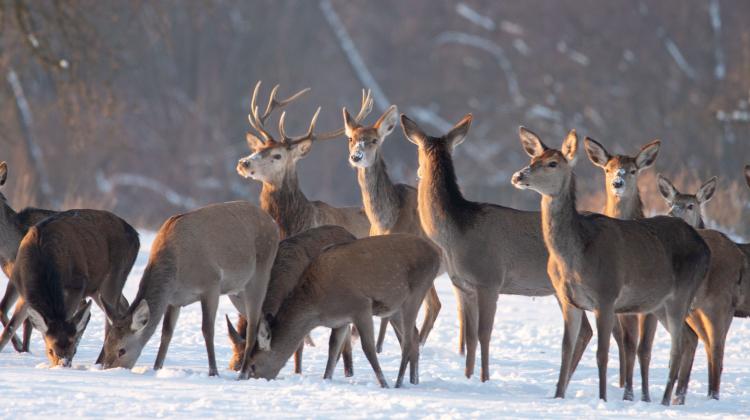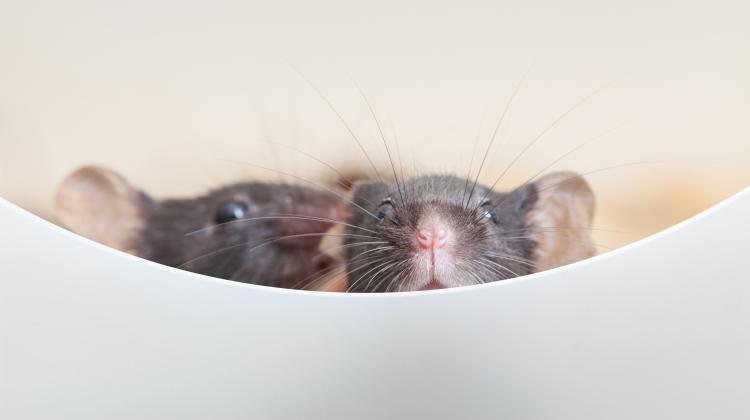Movement above, movement below - researchers examined a crossing for animals

Roe deer, red deer, wild boars, hares, foxes and numerous small forest animals, and in addition people, dogs and cats ... Researchers checked, which species use the special animal crossing under the S1 expressway near Zwardoń. This is the first such study in the Polish Carpathians.
Animal "traffic" on the special crossing under the S1 expressway, running from Żywiec to the Slovakian border, was analysed by Dr. Robert Mysłajek and Olga Gewartowska from the Institute of Genetics and Biotechnology, Faculty of Biology, University of Warsaw, together with Dr. Sabina Nowak and Korneliusz Kurek from the Association for Nature "Wolf" and Katarzyna Tołkacz from the Department of Parasitology, University of Warsaw.
The crossing is located near Zwardoń. It was built to allow animals to use two Natura 2000 sites, located in the Silesian Beskid and the Żywiec Beskid. It is an approx. 200 m wide strip of overgrown land left under the road. A small stream with banks reinforced with stones flows there, and trees planted in the vicinity help guide the animals to the crossing.
Approx. 1,300 cars pass each day on the S1 over the crossing. There is also considerable traffic below: approx. 19 wild animals per day use the crossing.
To determine which species appear there, the researchers used a special path lined with sand, and then checked tracks over a one year period. Most of the tracks (approx. 68 percent) belonged to wild mammals, most commonly - roe deer, used the crossing more than 800 times in one year. There were also red deer (273 in a year), wild boars (4), rabbits (147), foxes (nearly 400), as well as pine martens, badgers and polecats. Other animals that used the crossing included moles, otters, hedgehogs, squirrels, weasels and stoats. Regularly, though not often, there were traces of small rodents.
The results of the study have been presented in specialist journal "Folia Zoologica".
"The results were very good, despite the fact that the crossing is relatively close to buildings. It turns out that large mammals can use this crossing to make it to the other side of the road" - said lead author, Dr. Robert Mysłajek.
Intensive presence of deer on the crossing does not necessarily mean that they have a great need for migration. Deer can come there in search of grass and tasty herbs - noted the authors of the study.
About every fifth animal passing under the overpass was a dog (514 in a year) or cat (116). People also used the crossing, they left tracks 264 times in one year. However, even sporadic human presence can act as a deterrent for wild animals - noted the authors.
Why the need for such analysis? Scientists wanted to see if large mammals, especially deer would use the crossing. "Animal road crossings are quite expensive. It is good to have the feedback that money on them is well spent. For the investor, this information is crucial" - said Dr. Mysłajek.
Crossings have different structures and sizes, taking the form of passages and narrow tunnels or wide, turfed bridges. They are today\'s most popular solutions that allow animals to move around despite the continuous expansion of the road network. They provide ecological connectivity between areas of natural value or protected, such as Natura 2000 refuges (that function as a network of protected areas), national parks, landscape parks and reserves. It is believed that the presence of these crossings mitigates the effects of habitat fragmentation, the process recognized as one of the threats to wild species.
According to Dr. Mysłajek, monitoring data provide important information for the design of the next crossings, which - as it turns out - can have varied effectiveness. "It appears that the key is the width and design of the crossing. When we compared large (40-45 m in width) and small animal crossings (width of 15-18 m) in Lower Silesia Forests - it turned out that the small crossings were used mainly by small animals, such as foxes and hares. There were no hoofed mammals - wild boar, red deer, roe deer. However, all these animals appeared on large crossings" - he said.
Although many studies on the use of crossings by animals are carried out in the world - such observations are seldom carried out in Poland. "This is the first study conducted in the Polish Carpathians" - said Dr. Mysłajek. He reserved, however, that the conclusions of this study should not be applied to lowlands, where the conditions are different.
PAP - Science and Scholarship in Poland
zan/ mrt/
tr. RL
Przed dodaniem komentarza prosimy o zapoznanie z Regulaminem forum serwisu Nauka w Polsce.


















